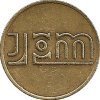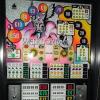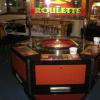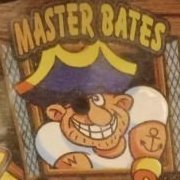Leaderboard
-
[[Template core/front/popular/memberRow is throwing an error. This theme may be out of date. Run the support tool in the AdminCP to restore the default theme.]]
[[Template core/front/popular/memberRow is throwing an error. This theme may be out of date. Run the support tool in the AdminCP to restore the default theme.]]
[[Template core/front/popular/memberRow is throwing an error. This theme may be out of date. Run the support tool in the AdminCP to restore the default theme.]]
[[Template core/front/popular/memberRow is throwing an error. This theme may be out of date. Run the support tool in the AdminCP to restore the default theme.]]
Popular Content
Showing content with the highest reputation on 09/25/21 in all areas
-
More..... As an aside to the product per se we had couple of issues to deal with that were not down to the design of the products themselves but were down to the industry we were in and products appeal to those less scrupulous characters One such issue that JPM experienced was the new products susceptibility to Static electricity and the result of that ‘attack’. We found quite early that the machine could give unexpected results to static but this was not just the gas lighter piezo cell that was being used by the public to upset the controller. Even walking across a carpet could cause an issue and this was being exacerbated by two fairly new concepts that just happened to occur at more or less the same time. With the advent of ‘banked wins’, punters ( I always hated that term) were allowed or encouraged to bank their wins. As a manufacturer JPM realised that this was a good thing as the resulting payout always seemed significant rather than the staccato clank of smaller wins, believe me a lot of people were persuaded to play when they heard that advert! Anyway, JPM had a major issue with static and it got to a head and was proving to be so troublesome that I was bundled off to an establishment called ERA Technology where we subjected the machine to a series of tests in an anechoic chamber. I don’t think the sound quality or lack of it in the room was anything to do with the tests it’s just that was the only room available at the time. It was a very strange environment in which to hear a machine payout! So we sat there for hours hitting the machine with static but nothing seemed to be getting past the earth bonds and when they did the level 3 interrupt(?) circuit performed as it was supposed to. Then suddenly the machine went haywire, pulsed out a coin and the test equipment registered a huge spike - from out of the blue. Scratching our heads we continued to play and then it happened again, but this time just as the machine was paying out, one clunk and reset and the test equipment showed a spike. As we discussed the subject of static over a coffee, as you do, the engineer from the establishment explained a little about static and how simply raising a coin from your pocket to the machine could induce static but not enough to cause any issues and in any case the new Mars mech was plastic and so it could not dissipate the charge. The answer struck me like a streak of ………. The coins were entering the coin guides and coin tube, unearthed, and then standing there like a great big capacitor ready to jump that gap between the payout slide and the casting of the payout mech when the charge was sufficient and believe me it was huge!. We tried earthing the tube with an insert and overcame the problem but then any of you that have had site experience will know that anything in the path of a coin WILL cause a coin jam, no matter how careful you are. So I took out the payout slide, inserted a rivet through the slide and filed it down, again after refitting and testing it sorted the issue, however this was not an answer. I contacted Coin Controls in Oldham and persuaded them to add a measure of graphite ( I think it was graphite ) to the plastic material before injection moulding, this gave it the conductivity of a peace of wood. After explaining what the problem was and negotiating for JPM to take the first consignment, we agreed to uniquely test it for three months before releasing it to the industry. That’s how we overcame that particular static problem first.9 points
-
My winter project.A 1960 united model c.Ive had the model a now nearly 2 years.This is cosmetically good,though i may spray a few bits.Not currently working and not sure why yet,but the inside workings are same as mine,so that should help.Its complete and ive only just got back with it from oxon.5 points
-
Electro mechanical to Electronic machines 1978 ? ish As I recall, the initial ventures into the future with the new electronic JPM machines used the traditional reel unit mechanics. Obviously a much lower current than was traditionally used was sent through the static reels mechanism, after the reels had revolved and stopped, and in the case of a win position through the aligned wipers against the studs and shorting the appropriate contacts. This brought about new issues due to the low power required, variable resistance due to dust, dirt, scratches etc, and other problems due to the sensitivity of the control circuits and the soon to be antiquated mechanical nature of the reel unit. To keep the wipers held firm against the studs meant that the motor needed to be held on while the sensing pulse was sent, but any aberration of the drive shaft meant that the wipers would continue moving slightly and the contact would be less than optimum. If I remember we called it ‘breathing’, the reels would literally move up and down and seem to separate from each other! A few machines were constructed in this way and tested in Arcades in local seaside resorts such as Barry Island and Porthcawl but they proved to be unreliable to say the least and demanded regular call outs and attention and the system was deemed troublesome. One (older) guy working with us, Charles Weekes (who became my mentor and a friend friend) was an old school technician who could regularly be seen scratching his wrinkled forehead with his foul smelling, smoke belching briar pipe. Charles Weekes (RIP) had worked on Juke box’s, old Bally, Jennings and latterly ACE machines, having run his own operating company in Caerphilly. Not only that but he had during his National Service days worked on very large scale flight simulators or more correctly as I recall, bomb and anti aircraft training simulators for Lancaster or Wellington bombers. I know not which aircraft and I suppose it could have been neither of them but that’s not really the point, they were large scale electro mechanical projects which demanded regular calibration.. It was Charles that explained to me that a ‘bug’ in the system, well at least back in the day, was in fact exactly what it was. An earwig, moth or similar insect, which had crawled into an open relay or a rotary timer had either shorted out two points or stopped a current or signal from being transmitted from one point to another so you had to find the ‘bug’. Charles one day, completely out of the blue, suggested that we should be looking at using stepper motors to send the reels to a random position then recognise that position by reading a code from the edge of the reel, a grey scale or grey code I believe it was called. He also mentioned to me in a conversation over coffee, that this was a proven technology and normal practice on military tank turrets and rotating gun emplacements but I have no way of proving this was the case. By this time I had moved to After Sales Service and was busy in the field and on the phone but as I was a product of the development department I was always welcomed in to help and give field input or just take a coffee and a Marlboro. He also mentioned to me over coffee and a game of Backgammon, he always won, that this was a proven technology and was normal practice on military tank turrets and rotating gun emplacements but I have no way of proving this. Of course the big problem was the gigantic leap to reverse typical current thought processes. Consider the following.. Randomness in an electro mechanical gaming machine had hitherto always been brought about by the various lengths of time that the reels span and then stopped. This in turn was governed by the control motor run time, but this was also interrupted by a, at least on JPM machines, a ‘random’ timer thus allowing the reels to spin for a random period each game That tried and tested method was about to be turned on its head by sending a reel to a position ‘that was already determined’ by the on board computer. Although the grey scale method was tried and proved to be effective it became obvious that the drive system itself was proving to be pretty reliable. Indeed the precise fixing of the grey scale could prove itself to be problematic given production conditions and personnel, so it never got past the initial prototype and research stages but it was exercised as an idea. Reality was that the drive was so effective, the software only had to check the reels once in a revolution to confirm that it was where it should have been to be reassured that all was ok, or stop and alarm if it was not! Despite all this the first actual ‘game’ implementation proved to be problematic, but I’ll come to that later A great deal of thought and effort went into the process and all the while the realisation that JPM would have to gain the Gaming Board of Great Britain’s approval for such a system. And so the Project began it’s long and tortuous journey. The initial conversations were conducted and the agreement was to go ahead in principal and develop a prototype to conduct a presentation. In reality JPM had already begun scratching the surface of the design and development and had enlisted the help of Texas Instruments. Charles and the dev team had put together the prototype and enlisted the help of a company called Starpoint to build the plastic assembly that would hold the stepper reel in place and allow the free movement of the reel. Starpoint were already in the Industry and had supplied various high quality, precision made plastic parts so they were a natural choice and apart from that, the Directors knew each other and already played golf. Although initially it was a single stand alone unit fixed to a base, it was soon developed as a modular unit that could be clipped together in banks of three or four. In order to prove to the Gaming Board of GB that the system was infallible JPM had to run the system for, as I recall, 250,000 games. As each game ended, and with the use of a super 8 cine camera set on single shot, the result of each single game was recorded. However this would be of no use at all if we did not know what the computer had decided which position the reel ‘should’ have been sent to. So as a confirmation we had a 7 segment LED panel mounted by the side of the reel and this recorded the game number as 12,350 12351 12353 etc which was duly recorded on the single shot. Combined with that a dot matrix printer recorded on fanfold paper, and in a very fine font, the result of the games i.e GAME 12350 Org#1, Lem#3, Bel#1 etc for every one of the 250,000 games. That (#) number against the fruit symbol was as a result of their being more than one of that particular symbol on the reel, and it was necessary to prove that the system had selected the correct one. After being asked to be part of this process, seconded as it were from After Sales, I was asked to check at least 1,000 lines of these results at random from each page of paper. Oh the Joy! This included rolling the cine film to the numbered position to check the result at which point I placed a small tick against the checked result on paper. There were no mistakes. The gaming board were once again invited to the factory where they were asked to look over the result and if they wished they could check for themselves that all was in order. They did actually check the results for themselves and I sat with them for that whole day going over the prints and the video shots and instructing the machine to go to a chosen win line which we did several hundred times. Starpoint did a brilliant design job of the Reel Unit and the product was released with the first machine being the “Each Way Nudge”. Previously, electro mechanical machines had used the principle of Nudge or shifting a reel one position forward. Due to the mechanical complexities it was fraught with problems and proved practically impossible when trying to move a reel backwards. This brought it’s own difficulty with the first game as I mentioned earlier, you see during the ‘dev test’ of the game software, the machine kept getting out of step and we could not figure out why as it had never happened in any of the extensive tests before the ‘game’ software was introduced. It was only when we realised that the break of the optic beam by the registration tab on the reel was made by the tab going forward OR backwards and that the tab was ‘x’mm long, that we understood the problem. As the machine was the Each way nudge, occasionally the tab would break the opto beam as intended, but in the reverse direction. Realisation was that the software had to look for the leading edge of the beam being broken on forward rotation and the trailing edge on reverse, the problem was solved. There were problems introduced when differing suppliers of reel bands supplied alternate thickness of reel bands, adding to the inertia of the reel and overcoming the ramp timing which could cause problems, but tighter specifications overcame that as well. Due to the stepper motor implementation any reel could move in any direction which opened up a whole new world of game possibilities and of course any one of a number of fruit symbols on a reel could be used when the ‘game engine’ decided on a result. Normally there were 20 symbols so if 4 of these were lemons the chance of a lemon coming up for any on reel (given decent randomness) was 4 in 20, (1 in 5) or 20%. Thanks to the design it was irrelevant how many symbols were on the reel as the game was run and the reel was told exactly where to go, or to be more exact, which symbol to go to, so there could now be 20 completely different symbols on the reel as the percentage no longer relied on the actual number of the symbol on the reel. Of course for cosmetic reasons and because of the nudge, there had to be more than 1 of each symbol but the ‘reel’ in the software could be 100 symbols long. This new method became known as the “virtual reel and as it was buried in the software department I know very little more than that. As I still worked enthusiastically and closely with the Dev team, my exposure to and knowledge of the product was growing in contrast to my colleagues in After Sales. This placed me in a good position for the next step up the JPM ladder. As an aside, the ‘nudge’ feature was actually patented by the Dransfield Novelty company, a facility that I visited and was welcomed to quite often. This no doubt provided the company with significant income as every machine with the nudge facility had to pay them. This is quoted from the Dransfield web site… "The nudge feature, which is still an integral part of most modern gaming machines was developed and patented by Dransfields many years ago and demonstrates its long established pedigree within the industry."4 points
-
Sorry guys again that's a Sales related question but I will try and find out.3 points
-
Or the Bird's beak.... in fact a real tweet!! (Sorry. Leaves the room!)3 points
-
Interesting stuff Frank, thanks for going to the trouble of typing it all out. Playing machines is not my thing and I get totally lost when folks quote all the names of the games and nod to each other. My interest is in the technology and it's so great to hear it from the horses mouth, if you'll excuse the saying. Bob3 points
-
I would like to personally thank frank for sticking with the mecca and sharing his very interesting life with us all.. Looking forward to more stories from the birds beak We are indeed lucky to be able to share franks experience in the industry in such great detail and 1st hand.. Thanks again mr bird1 point
-
Thanks Bob & everyone. I got it to do a reset beep repeatedly and got stuck without being able to probe it. I tried linking a load of batteries together and putting around 15V across the big capacitor - same repeat beet but batteries didn't last long. I borrowed 777h PSU and put the 15V line across the big cap and could probe it without blowing the 16.A fuse on that PSU. Finally I could see CPU pin 17 was low (should be high on procon so didn't look right). the pin has a pullup resistor bit is also linked to a bit of the board which has missing components (look like never been fitted) and not east to see where track is shorting. It didn't seem to bell to anything. So pullup resistor jumped directly to CPU pin 17 and we are in business (in a kind of resistor half hanging off the board and CPU leg not in socket linked by wire temp. hack) I still don't really know why I can't probe it with it's own PSU. One of life's mysteries I guess. only draws 0.003uA from a 3.6V battery.1 point
-
Door switches aren't getting pushed home enough or sometimes people loosen the screws so it stays in open door / demo mode. Well done for getting through the no sound error. Difficult one to pin down on a scorp 41 point
-
Well I'm going to send the mpu4 off to maggi+maggi for repairs I really want to get this machine up and running I've back tracked over old stuff on here and they seem to be the same problems I'm having I'm going to get the lamp board out to get that checked over too but them screws are well and truly stuck it there so some brute force needed I was hoping that one of the older most knowledgeable members on here would help a mere novice out with offers but guess they are too busy with their own machines so will have to go it alone.If anyone reads my posts will let you know how I get on.1 point
-
Looks like the Door is open, that's why when you hit cancel/collect it will give you £15 credits. usually if you have this error, the alpha will say " read meters" does it do that???1 point
-
Well, first of all, I can't tell you what a relief it is to hear, unprompted, that you find it interesting. It was an incredibly interesting time to be in the industry and with such a great company and bunch of people, many of whom still meet now. Stegarv66, consider that we were 300 people and often the 'game' itself was down to 10 or 15 people, so although we would have seen it, in answer to your question no. Also we tried to get a new game out of the door every 8 weeks so for us it was always looking to the new machine! sulzerned, you are dead right and forgive my oversight, the SRU (stepper reel unit) controller was the controller in the EWN and you have just (by coincidence) introduced the next chapter or are you hacking my machine..... ha ha. BF74, I never did like that very crude % control. Apart from anything else, unless it was dead right you could hear the double flick of the solenoid arm as well. It was also an unfortunately simple method to keep the PO% down. Bit like cutting a stop off the old reel stop disk to make sure it never landed on a particular symbol. BTW I still have SWP's, Astra, Coinmaster and Gamesoft to go yet! ( but I'm not sure if they should go in here? ) Again, thanks people.1 point
-
Hey Donald it was great to meet you today and your in the right place for support. Ronnie1 point
-
Frank, Following your great read with interest with working just about right through that era myself. Can I ask you a question on the electro mechanicals and especially on JPM club machines.? Considering the already randomness of the electro game. What are your thoughts on the Jackpot control.? If the jp control timer switches were switched in the correct position they would keep the number two reel solenoid activated through the wipers and studs just enough make the jackpot symbol 'skip' past the win line.? As number two reel is crucial to a three way win left to right, right to left and indeed all four reels, this control did seem very dubious. I found this when trained at Bell Fruit where the same setup was used on all their club machines too. Although the variator was already in place to stop the reels from sequencing, I was never in favour of the jackpot control units as an added % control. Always seemed like cheating the player.1 point
-
1 point
-
Oh no it isn't! Now I've had a proper look at it, it can't be Maxi as that uses a SC/MP CPU rather than a Z80. The mystery board has a Z80 CPU and no PIO chips so it must be MMM, probably a later version as it has a single 6116 RAM chip instead of the two 5101's on the early version. Procon was the first to feature a row of PIO chips along the middle of the board. Maygay PCL MMM Manual.pdf Maygay PCL Maxi Manual.pdf Maygay PCL Procon Manual.pdf1 point
-
The reels on them pcl maxi machines like superstars,double bonus and link3 used to kind of slide to a stop,maygay quickly moved on to mmm with cash or nudge freespin wild hold etc.1 point
-
1 point
-
The Link 3 will be an early version of PCL maxi along with this 1982 Emperor club (MPU pic) which has the same board. Because the Money Drop is on £4 payout has to be at least an 87 game so expect by then the the board was more compact.1 point
-
1 point










